SLVSBN4C January 2013 – August 2016 DRV8839
PRODUCTION DATA.
- 1 Features
- 2 Applications
- 3 Description
- 4 Revision History
- 5 Pin Configuration and Functions
- 6 Specifications
- 7 Detailed Description
- 8 Application and Implementation
- 9 Power Supply Recommendations
- 10Layout
- 11Device and Documentation Support
- 12Mechanical, Packaging, and Orderable Information
Package Options
Mechanical Data (Package|Pins)
- DSS|12
Thermal pad, mechanical data (Package|Pins)
- DSS|12
Orderable Information
6 Specifications
6.1 Absolute Maximum Ratings
Over operating free-air temperature range (unless otherwise noted)(1)(2)| MIN | MAX | UNIT | |||
|---|---|---|---|---|---|
| Power supply voltage, VM | –0.3 | 12 | V | ||
| Power supply voltage, VCC | –0.3 | 7 | V | ||
| Digital input pin voltage | –0.5 | 7 | V | ||
| Peak motor drive output current | Internally limited | A | |||
| TJ | Operating junction temperature | –40 | 150 | °C | |
| Tstg | Storage temperature | –60 | 150 | °C | |
(1) Stresses beyond those listed under Absolute Maximum Ratings may cause permanent damage to the device. These are stress ratings only, which do not imply functional operation of the device at these or any other conditions beyond those indicated under Recommended Operating Conditions. Exposure to absolute-maximum-rated conditions for extended periods may affect device reliability.
(2) All voltage values are with respect to network ground terminal.
6.2 ESD Ratings
| VALUE | UNIT | |||
|---|---|---|---|---|
| V(ESD) | Electrostatic discharge | Human-body model (HBM), per ANSI/ESDA/JEDEC JS-001(1) | ±4000 | V |
| Charged-device model (CDM), per JEDEC specification JESD22-C101(2) | ±1500 | |||
(1) JEDEC document JEP155 states that 500-V HBM allows safe manufacturing with a standard ESD control process.
(2) JEDEC document JEP157 states that 250-V CDM allows safe manufacturing with a standard ESD control process.
6.3 Recommended Operating Conditions
TA = 25°C (unless otherwise noted)| MIN | NOM | MAX | UNIT | ||
|---|---|---|---|---|---|
| VCC | Device power supply voltage | 1.8 | 7 | V | |
| VM | Motor power supply voltage | 0 | 11 | V | |
| VIN | Logic level input voltage | 0 | 5.5 | V | |
| IOUT | H-bridge output current (1) | 0 | 1.8 | A | |
| fPWM | Externally applied PWM frequency | 0 | 250 | kHz | |
(1) Power dissipation and thermal limits must be observed.
6.4 Thermal Information
| THERMAL METRIC(1) | DRV8839 | UNIT | |
|---|---|---|---|
| DSS (WSON) | |||
| 12 PINS | |||
| RθJA | Junction-to-ambient thermal resistance | 50.4 | °C/W |
| RθJC(top) | Junction-to-case (top) thermal resistance | 58 | °C/W |
| RθJB | Junction-to-board thermal resistance | 19.9 | °C/W |
| ψJT | Junction-to-top characterization parameter | 0.9 | °C/W |
| ψJB | Junction-to-board characterization parameter | 20 | °C/W |
| RθJC(bot) | Junction-to-case (bottom) thermal resistance | 6.9 | °C/W |
(1) For more information about traditional and new thermal metrics, see the Semiconductor and IC Package Thermal Metrics application report.
6.5 Electrical Characteristics
TA = 25°C, VM = 5 V, VCC = 3 V (unless otherwise noted)6.6 Timing Requirements (1)
TA = 25°C, VM = 5 V, VCC = 3 V, RL = 20 Ω| MIN | MAX | UNIT | |||
|---|---|---|---|---|---|
| 1 | t1 | Output enable time | 120 | ns | |
| 2 | t2 | Output disable time | 120 | ns | |
| 3 | t3 | Delay time, INx high to OUTx high | 120 | ns | |
| 4 | t4 | Delay time, INx low to OUTx low | 120 | ns | |
| 5 | t5 | Output rise time | 50 | 150 | ns |
| 6 | t6 | Output fall time | 50 | 150 | ns |
(1) Not production tested – ensured by design
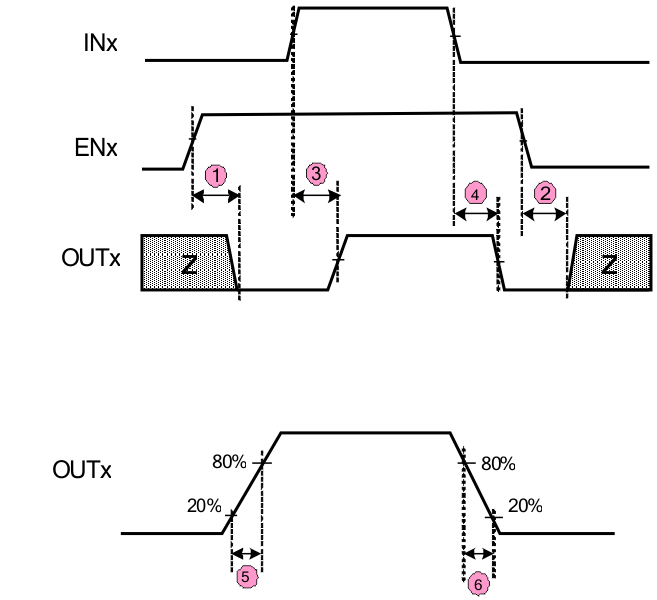 Figure 1. Timing Requirements
Figure 1. Timing Requirements
6.7 Typical Characteristics
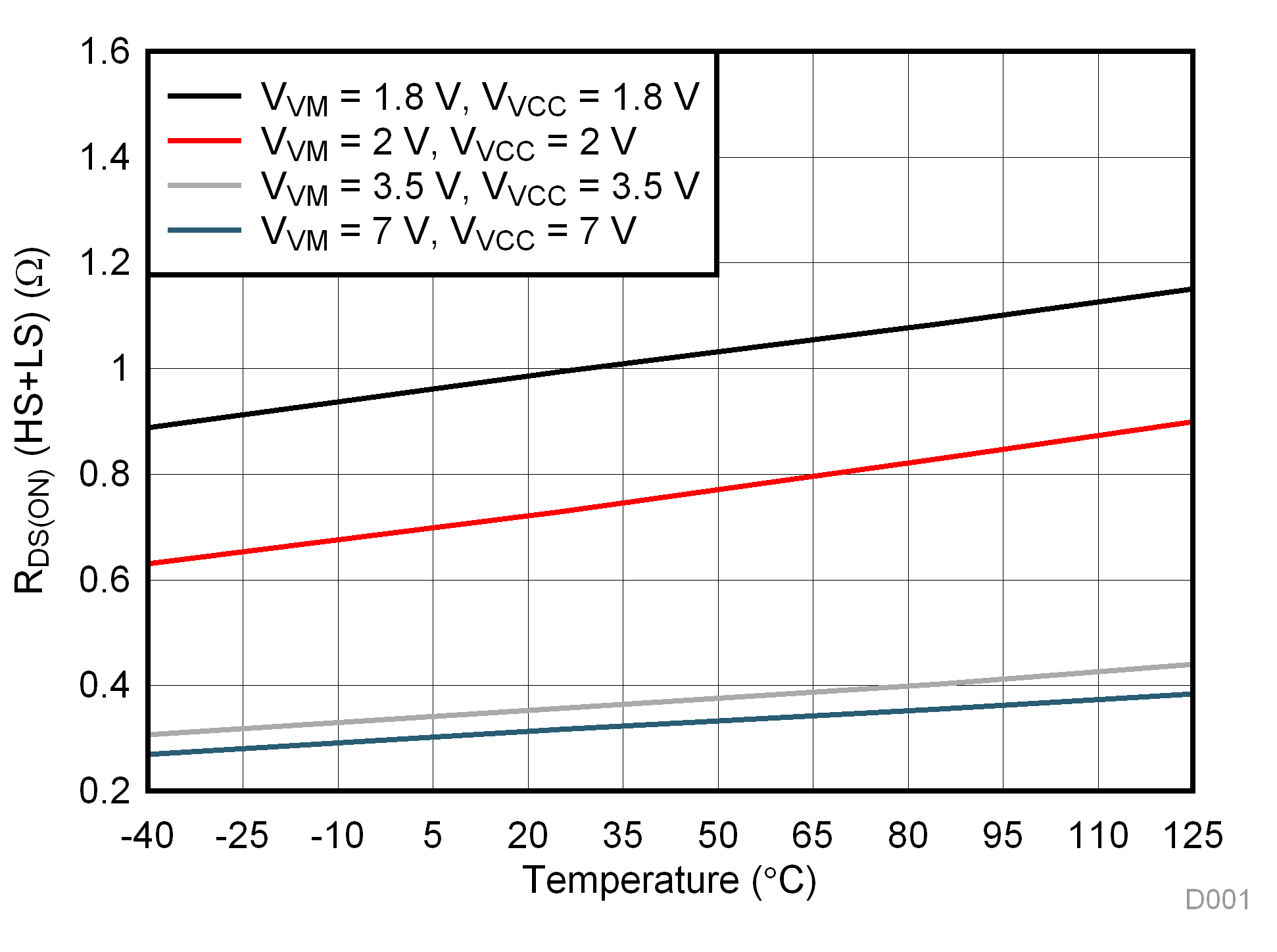 Figure 2. RDS(ON) HS + LS vs Temperature
Figure 2. RDS(ON) HS + LS vs Temperature
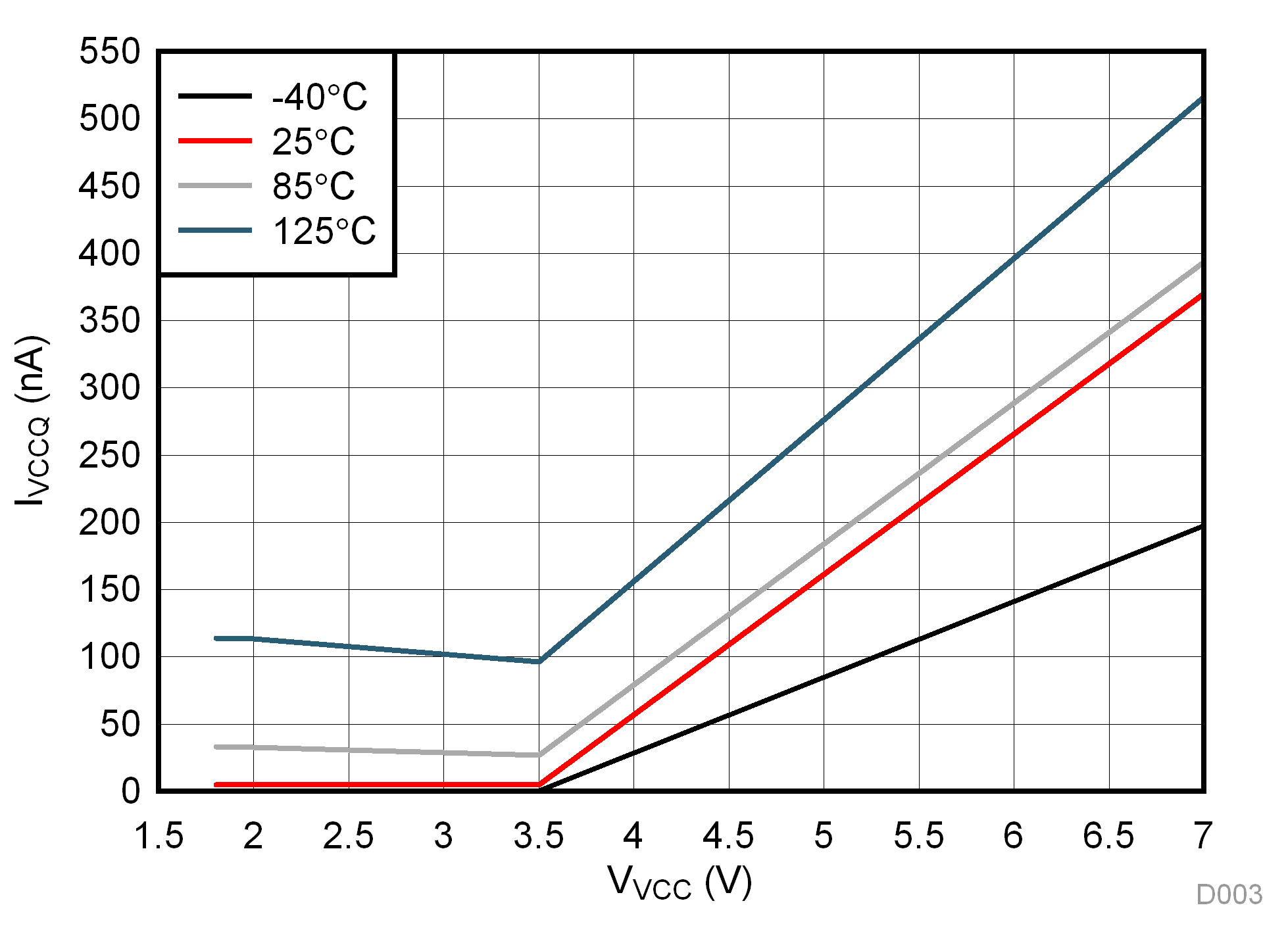 Figure 4. IVCCQ vs VVCC
Figure 4. IVCCQ vs VVCC
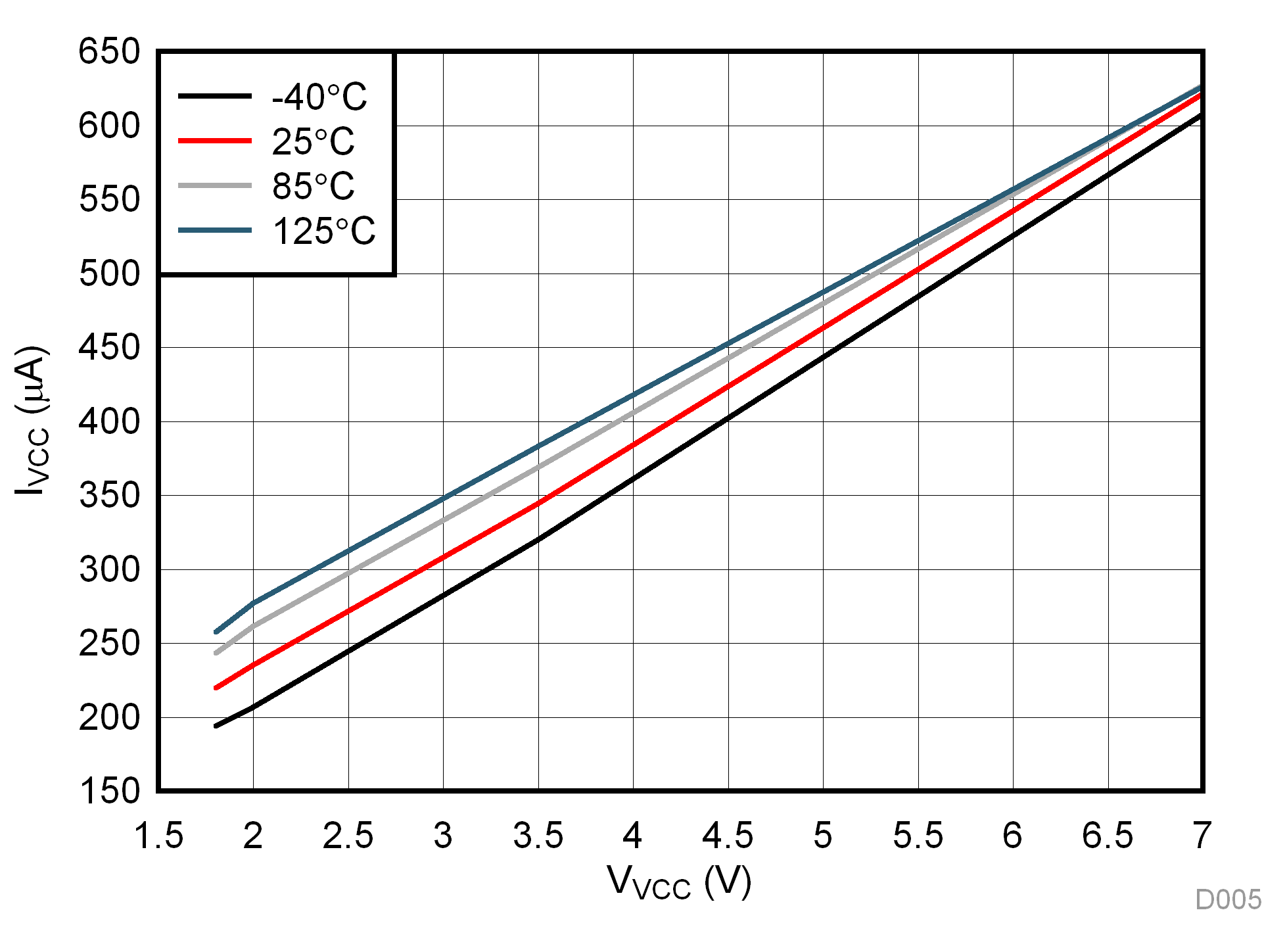 Figure 6. IVCC vs VVCC (No PWM)
Figure 6. IVCC vs VVCC (No PWM)
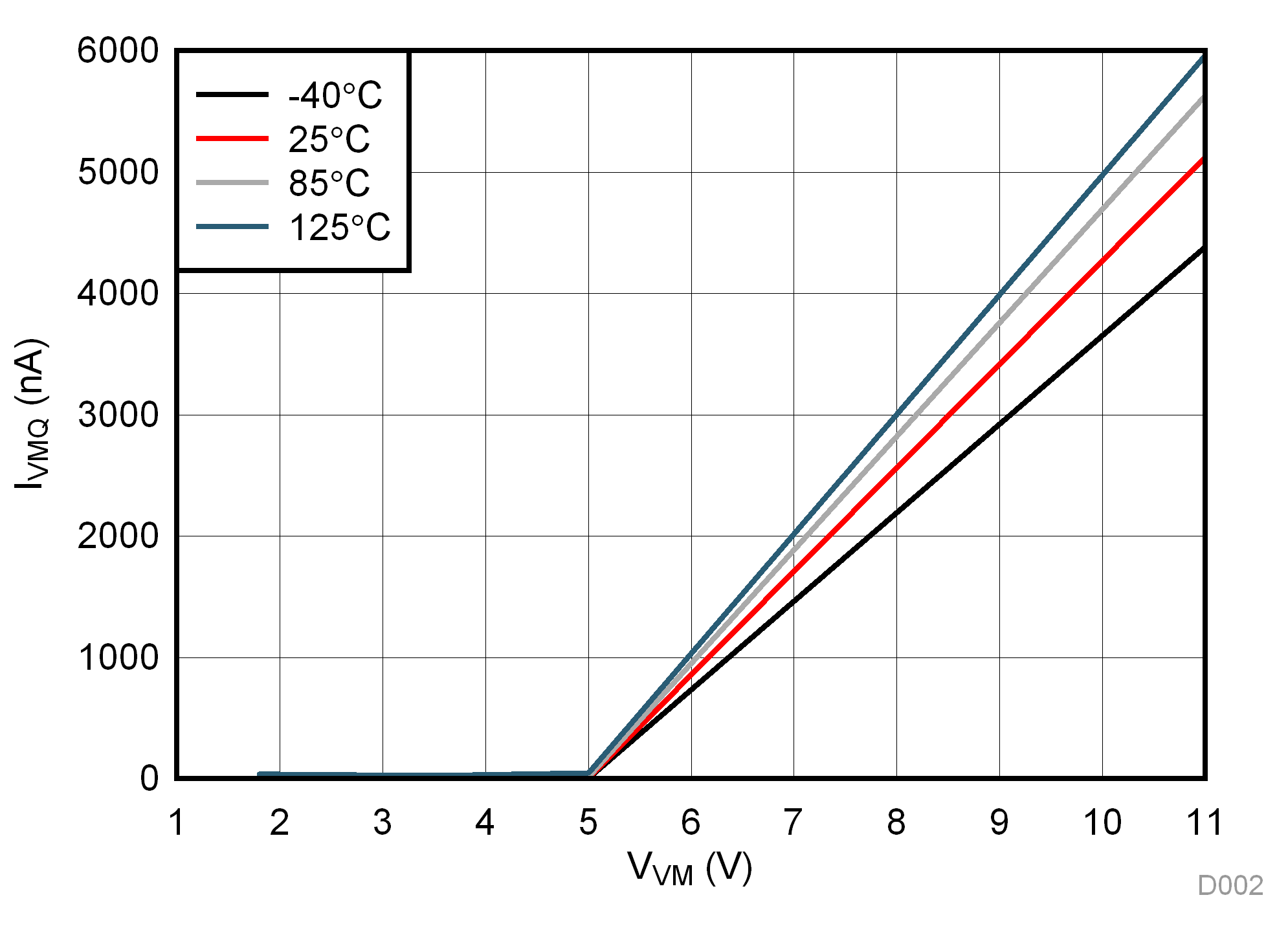 Figure 3. IVMQ vs VVM
Figure 3. IVMQ vs VVM
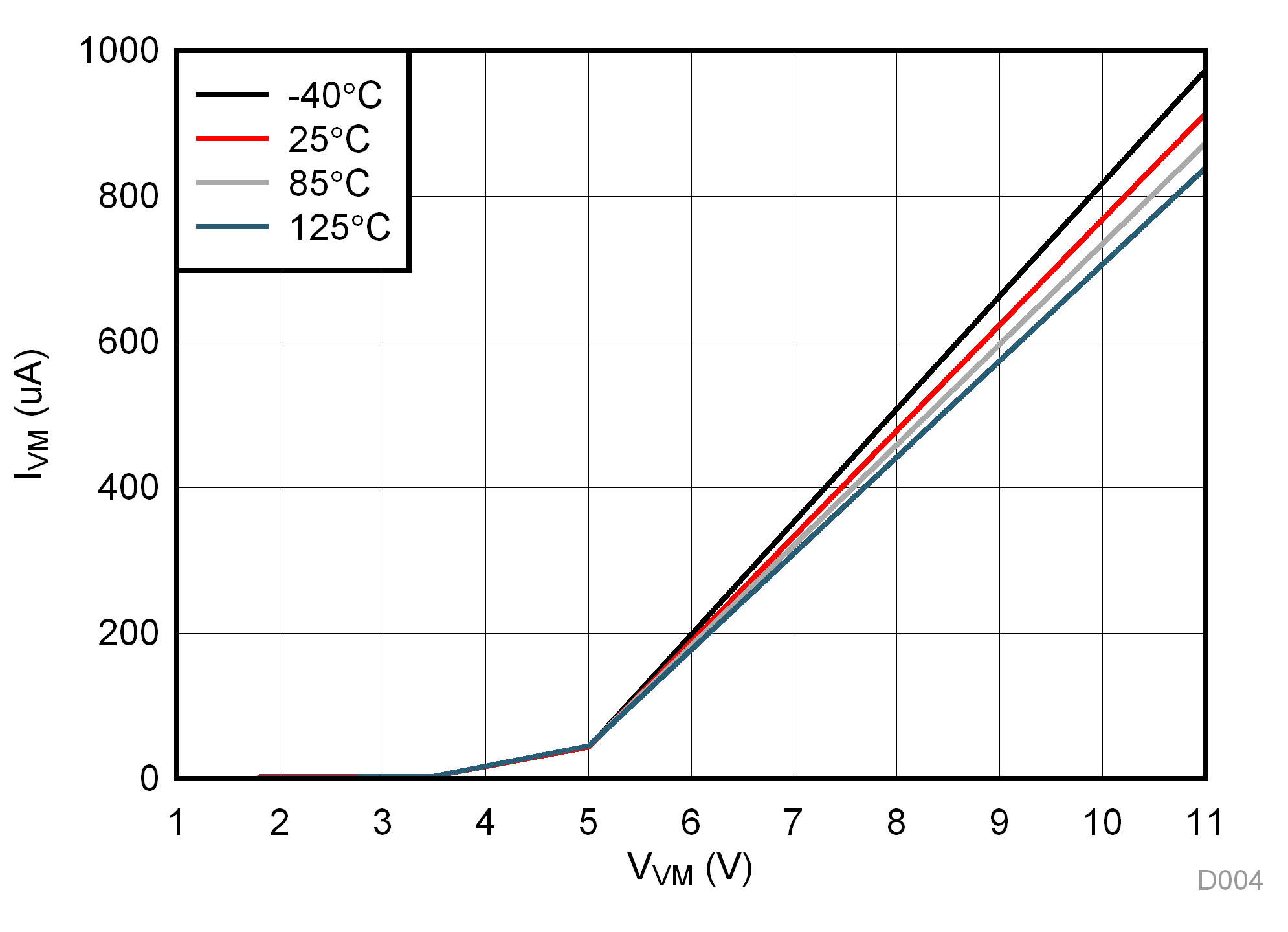 Figure 5. IVM vs VVM (No PWM)
Figure 5. IVM vs VVM (No PWM)